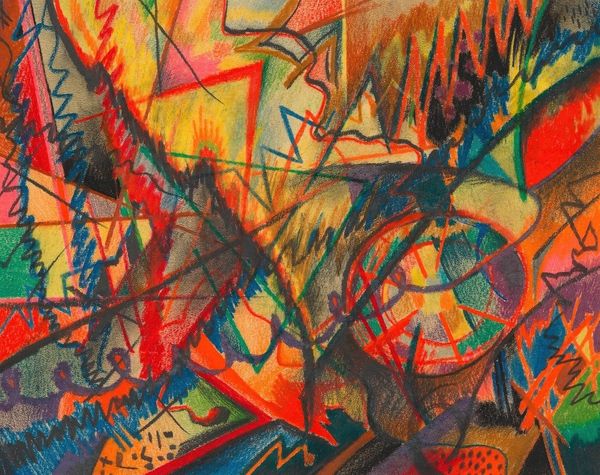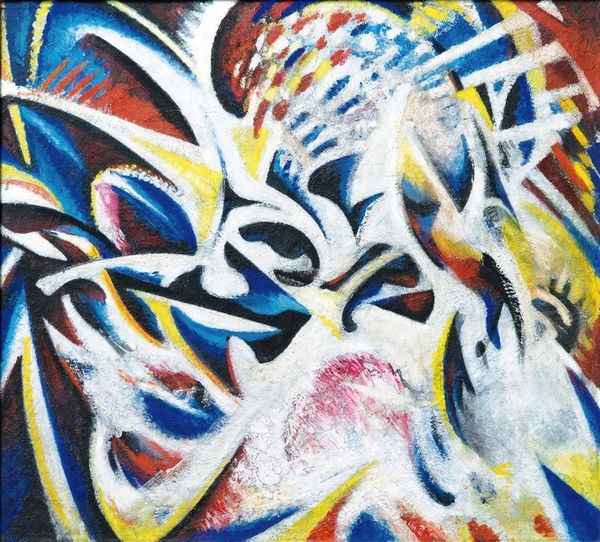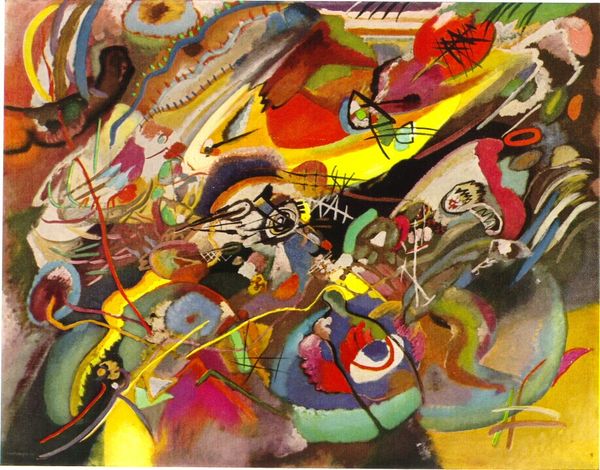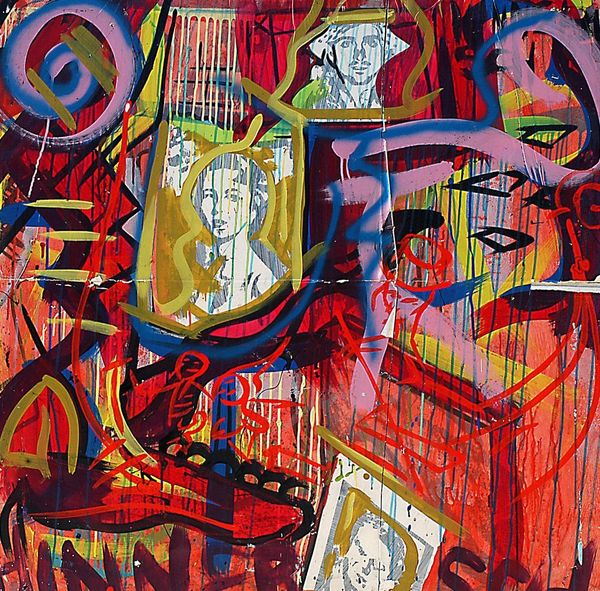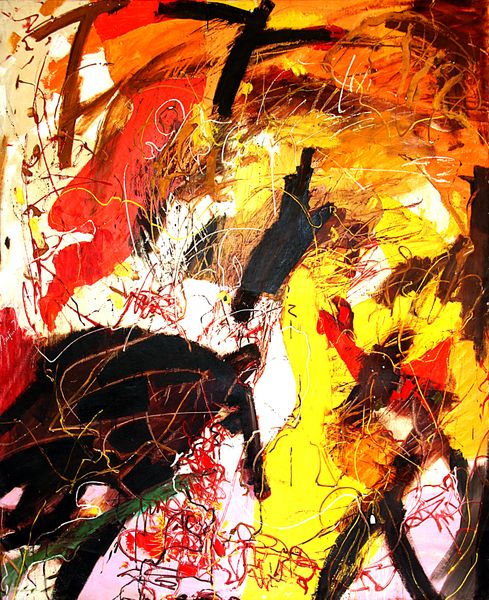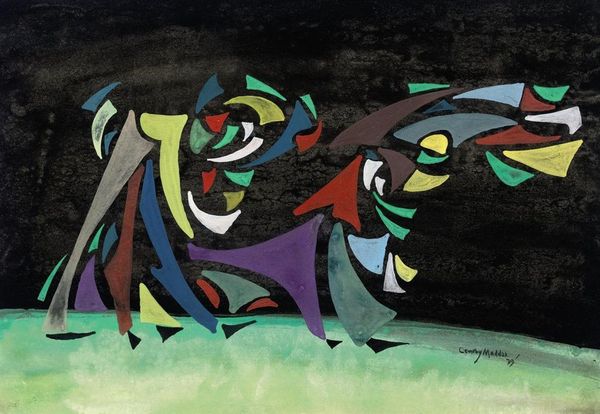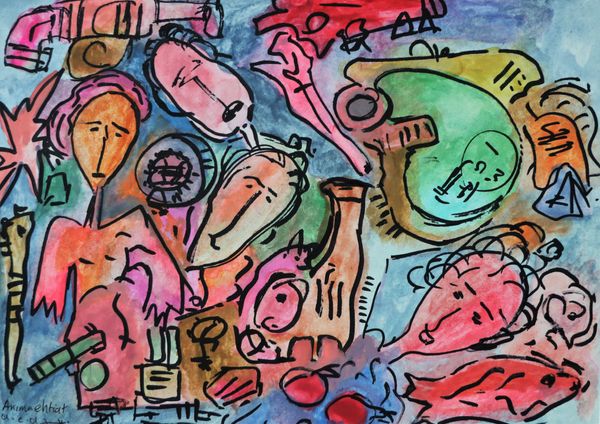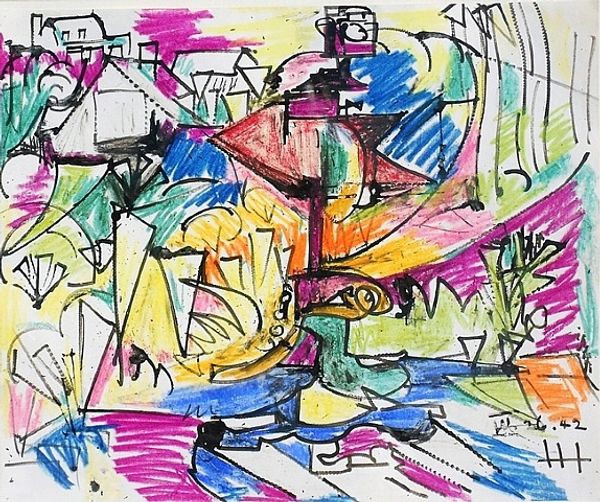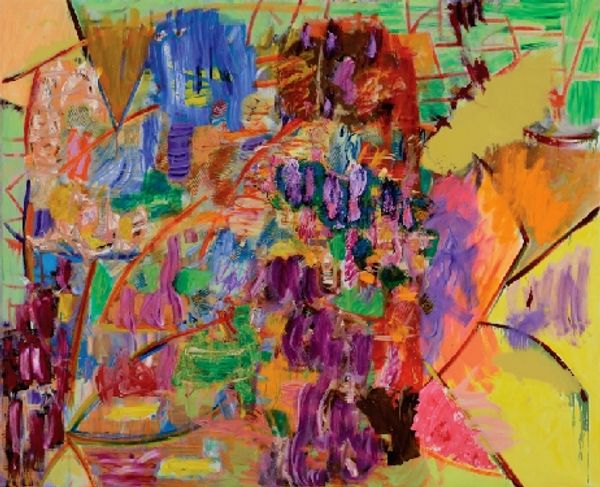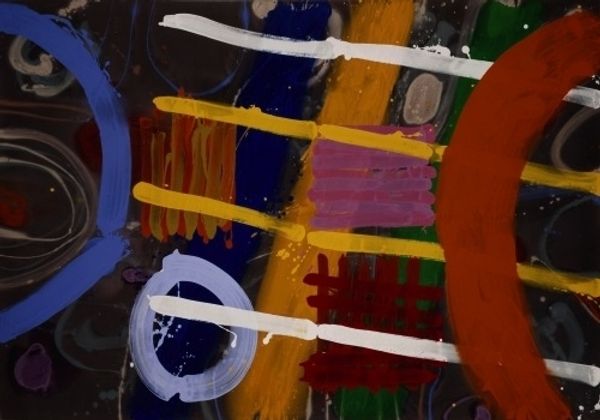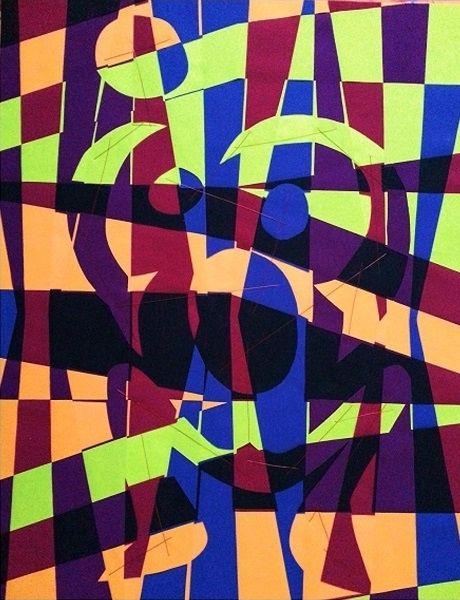
Copyright: Public domain
Curator: Wassily Kandinsky created this acrylic painting, simply titled "293," in 1913. At first glance, what are your impressions? Editor: It strikes me as a very emotional, turbulent piece. The vibrant colors and the dynamic composition create a sense of movement, almost as if it's depicting a scene from a dream or some kind of internal drama. The way forms are emerging from an undefined, paler background feels significant. Curator: Absolutely. Kandinsky was deeply invested in the expressive potential of art materials themselves, particularly color. This painting comes after he had explored Fauvism and before he began working as a professor at the Bauhaus. Note how acrylic paint allows him to play with opacity, creating depth. It represents a transitional stage where one can see echoes of representation yielding entirely to abstraction. Consider how daring it was for its time. Editor: And he is certainly not giving up the symbolic potential of figures: observe the almost floral element toward the top left. Red circles become not just marks on a plane, but potential signifiers laden with meaning and symbolic weight. Does it stand for love? Power? Danger? The radiant corona calls to mind a divine or celestial origin. Curator: It is important to realize the formal choices that determine our reading. Kandinsky seems to have abandoned figurative subject matter yet insists on compositional balance: each shape seems carefully positioned in relationship to others, creating what he would eventually define in *Concerning the Spiritual in Art* as a carefully constructed visual experience. Consider how each of these shapes would need to be processed, constructed, delivered, and even stored. Editor: So, despite the lack of recognizable imagery, he creates this whole visual language built on symbols, cultural codes and subconscious triggers. Curator: Precisely. It's an abstraction that still hums with the symbolic weight of his earlier representational pieces. A piece that forces one to reassess the very definitions of "craft." Editor: Looking at "293," I feel like I'm unlocking some deeply buried, shared human experiences through Kandinsky’s individual vision. It feels exciting. Curator: Agreed. It's an important piece that encapsulates a radical shift in the relationship between artist, artwork, and audience.
Comments
No comments
Be the first to comment and join the conversation on the ultimate creative platform.
